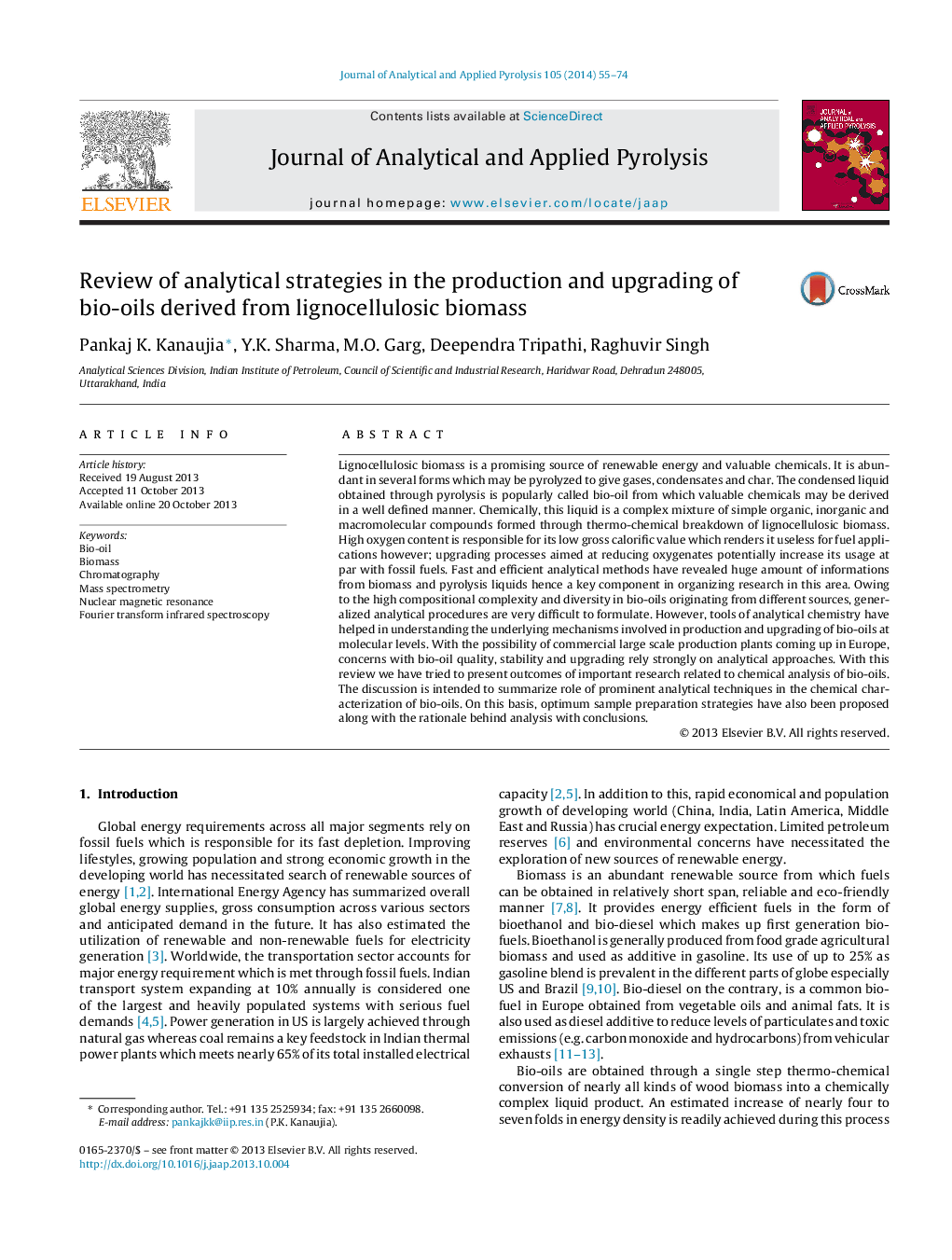| Article ID | Journal | Published Year | Pages | File Type |
|---|---|---|---|---|
| 1198353 | Journal of Analytical and Applied Pyrolysis | 2014 | 20 Pages |
•Literature review of outcomes and adopted methods for analysis of bio-oil.•Discussion on characterization of bio-oils through important analytical techniques.•Summary and review of conventional and contemporary sample preparation protocols.•Current trends and future perspective on bio-oil quality improvement.
Lignocellulosic biomass is a promising source of renewable energy and valuable chemicals. It is abundant in several forms which may be pyrolyzed to give gases, condensates and char. The condensed liquid obtained through pyrolysis is popularly called bio-oil from which valuable chemicals may be derived in a well defined manner. Chemically, this liquid is a complex mixture of simple organic, inorganic and macromolecular compounds formed through thermo-chemical breakdown of lignocellulosic biomass. High oxygen content is responsible for its low gross calorific value which renders it useless for fuel applications however; upgrading processes aimed at reducing oxygenates potentially increase its usage at par with fossil fuels. Fast and efficient analytical methods have revealed huge amount of informations from biomass and pyrolysis liquids hence a key component in organizing research in this area. Owing to the high compositional complexity and diversity in bio-oils originating from different sources, generalized analytical procedures are very difficult to formulate. However, tools of analytical chemistry have helped in understanding the underlying mechanisms involved in production and upgrading of bio-oils at molecular levels. With the possibility of commercial large scale production plants coming up in Europe, concerns with bio-oil quality, stability and upgrading rely strongly on analytical approaches. With this review we have tried to present outcomes of important research related to chemical analysis of bio-oils. The discussion is intended to summarize role of prominent analytical techniques in the chemical characterization of bio-oils. On this basis, optimum sample preparation strategies have also been proposed along with the rationale behind analysis with conclusions.
